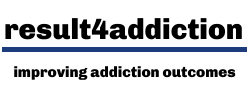How good is cannabis treatment?
Treatments for addiction problems have much in common regardless of the substance. Cannabis is readily available, widely used recreationally and to alleviate pain and symptoms of mental health disorders; this makes treatment difficult. Cannabis used regularly accumulates in the body and related problems, notably lethargy and lack of motivation, develop slowly without an obvious impact; this is a challenge. A supportive social network is especially helpful in such situations.
① Stabilisation ② Relapse prevention ③ Lifestyle change ④ Harm reduction
Stabilisation
Abstinence (detoxification)
Cannabis, tetra-hydro cannabinol and cannabidiol, are both eliminated from the blood stream quite quickly. Regular users will have built cannabis stores in fatty tissues and this produces a slow release of cannabis which can be detected in urine for a week or two and cause a low grade withdrawal syndrome.
Cannabis withdrawal is of mild to moderate severity but prolonged. Symptoms include insomnia, tremulousness, anxiety and irritability. While no detoxification medication is generally recommended there is clinical evidence that a fixed reduction of chlordiazepoxide 40mg at the rate 10mg weekly can be helpful - it is important not to extend the reduction period.
Cutting down
Cutting down is usually more difficult than simply stopping. Cutting down, if possible guided by a psychologist, requires adherence to some behavioural rules, all of which should be followed.
Relapse prevention
The strong social associations make it difficult for both recreational and dependent users of cannabis to abstain or moderate use. What might trigger further use?
in the short term
underestimating how long it will take to feel good
low grade withdrawal symptoms
too slow a return to positive daily activities
forgetting to practise coping strategies for cannabis smoking friends
in the long term
personal high risk situations
Rating high risk situations is the first task in a relapse prevention programme. Once identified and rated for the degree of temptation and the individual’s belief in their coping ability, new coping strategies can be identified, practised and implemented in real life. Guidance on implementing a relapse prevention intervention can be found in the iSBNT manual page30.
Relapse prevention medication...
There is no convincing evidence to support pharmacotherapies for cannabis abstinence syndromes.
Medications evaluated include: lithium and benzodiazepines.
Lifestyle change
It is only feasible to get on with the challenge of lifestyle change, which may include sorting out mental health issues, once a person has control of their cannabis use. Social treatments are most likely to be effective, for users, their family and friends, and other approaches can be effective provided that they are well structured and well delivered. Contingency management and other behavioural approaches are effective. Guidance on addressing lifestyle change can be found in the iSBNT manual page 41. The recovery tasks are all about making lifestyle changes.
Harm reduction
Generic harm reduction measures to improve health and wellbeing are to be applied throughout treatment. A specific harm reduction strategy is giving information and advice on how to avoid cannabis psychosis. Take a look at the Harm and Harm Reduction slides on the How do drugs work? page.



